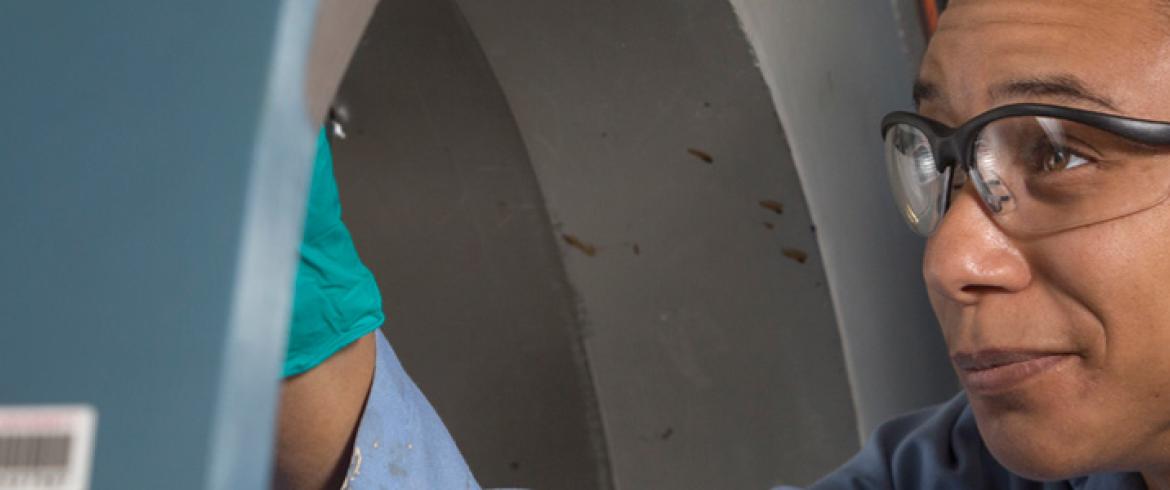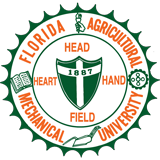
Active Structures and Microsystems Laboratory (ASML)
The Active Structures and Microsystems Laboratory is focused on the mechanics and physics of adaptive materials and their integration into structures and devices. This includes exploring fundamental field-coupled behavior (electric, magnetic, photomechanical, chemical), device and structural dynamics research, and the development of advanced control designs for broadband performance and precision tracking. This requires synergies between materials science, engineering, and mathematics. We collaborate with several researchers that range in backgrounds that include physics, mathematics, experimental fluid dynamics, and materials science to advance the field.
Advanced Aero-Propulsion Laboratory (AAPL)
The Advanced Aero-Propulsion Laboratory contains state-of-the-art testing and diagnostic facilities, not commonly available at university research centers. These include: a Hot Jet Anechoic Facility capable of operating supersonic hot jets - up to 2000 Fahrenheit, a STOVL Test Facility, an optical diagnostic development lab, and a supersonic and large subsonic wind tunnel. The main areas of research are high-speed flows and their control and the development of non-intrusive diagnostics for the study of complex flows. We study fundamental fluid dynamics problems, which also have direct practical applications. Some of the current research programs include: active control of supersonic jet noise and mixing, control of supersonic impinging jets, development of high-fidelity 3D Particle Image Velocimetry (3D-PIV), control of separated flows in engine inlets, supersonic jets issuing from nozzles of various geometry.
Advanced Materials Processing and Applications Laboratory (AMPAL)
The Advanced Materials Processing and Applications Laboratory is focused on processing, characterizing and testing of materials in conjunction with micromechanical modeling. Materials of interest include, but are not limited to, super plastic alloys (Niobium, Copper, and Aluminum), structural steel, and high-strength conductors such as Copper-Silver. These materials are employed in a number of scientific and engineering applications ranging from superconducting and electronic applications (radio frequency cavities, magnetic materials, etc) to structural applications. Processing involves the development of various severe plastic deformation methods such as tri-axial forging, equal channel angular extrusion (ECAE), rolling, swaging, and wire drawing suitable for producing bulk quantities of ultra fine grained material. Also currently being explored is a novel case hardening technique for both stainless steels and low carbon steels. The laboratory is equipped with various tools for characterization and testing. Some of the equipments include a high resolution analytical transmission electron microscope, field emission scanning electron microscope equipped with dual beams capable of performing in-situ ion-milling (ion beam) and 2D/3D-electron backscatter diffraction (EBSD) measurements (electron beam). The micromechanics modeling efforts provide an opportunity to correlate the material properties with microstructure. The mechanical modeling effort is being used to explain tension, nano-indentation, shear, and the superplasticity of advanced materials including composites. AMPAL collaborates with various other research groups and institutions both nationally and internationally to achieve our research goals.
Cryogenics Laboratory
The Cryogenics Laboratory, located in the National High Magnetic Field Laboratory, is a fully developed facility for conducting low temperature experimental research and development. The laboratory, which occupies about 400 square meters, supports in-house development projects as well as contracted scientific work. The experimental apparatus within the lab include:
- Liquid Helium Flow Visualization Facility (LHFVF): This facility consists of a 5 m long, 20 cm ID horizontal vacuum vessel with vertical reservoirs at each end. A variety of experimental test sections can be installed in the facility for measurements of flow and heat transfer including flow visualization studies. The LHFVF is currently being used for PIV studies of forced flow superfluid helium.
- Cryogenic Helium Experimental Facility (CHEF): This facility consists of a 3 m long, 0.6 m ID cryogenic vessel with N2 and He temperature thermal shields. CHEF is equipped with a high volume flow bellows pump capable of up to 5 liters/s liquid flow. Currently, CHEF is being used to study high Reynolds number liquid helium flow through orifice plates.
- Liquid Helium Research Test Stands: Numerous conventional vertical access dewars and insert cryostats are available for smaller scale experiments on heat transfer and flow. These include dewars between 10 and 60 cm ID with depths to 2 m.
- Additional Equipment: The laboratory contains all necessary equipment to carry out modern cryogenic experiments. Modern instrumentation for data acquisition is available to support experiments. High vacuum equipment includes a mass spectrometer leak detector and two portable turbo pump systems that provide thermal isolation. A high capacity vacuum pump (500 liter/s) is used to support sub-atmospheric liquid helium experiments to as low as 1.5 K.
Scansorial and Terrestrial Robotics and Integrated Design Laboratory (STRIDe)
The STRIDe Laboratory is dedicated to the design, analysis and manufacturing of novel and dynamic robotic systems. In order to imbue robotic systems with the agility and functionality akin to their biological inspirations, it is critical to understand the interplay between the structures' underlying passive dynamics and the control systems that enervate them. Research in this lab involves working closely with biologists to understand the underlying functional principles behind successful animal locomotion. These principles are then encoded in simplified dynamic models. The analysis of these models leads to insight regarding the roles of passive and active elements in creating self-stabilizing dynamic systems. Innovative manufacturing processes, such Shape Deposition Manufacturing (SDM) and other rapid prototyping techniques are then applied to build robots capable of moving in a dynamic and agile manner over difficult terrain. To analyze and build these robots, the lab is equipped with dynamic motion analysis equipment as well as a suite of state-of-the-art manufacturing tools.
Affiliated Laboratories
Advanced Aero-Propulsion Laboratory (AAPL)

